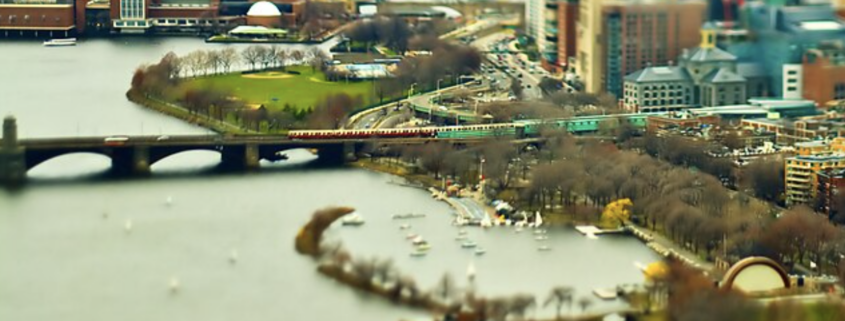


The West End is a small Boston neighborhood north of Beacon Hill. The population expanded when the city’s waterfront and North End neighborhoods experienced overcrowding in the 18th and 19th centuries. The West End was highly sought after by wealthy families since it was, at the time, separated by a small bay.
Today, it’s easy to notice the unique architecture scattered around the West End. Designed by Charles Bulfinch, the West End is home to the distinctively classic Federal-style buildings, which attracted many families who spread out from the heart of Boston.
By 1810, the West End became home to people from all walks of life: the wealthy, middle-class families, merchants, business people, and many different races and ethnicities. Today, it’s a mix of commercial and residential areas, although much of the residential area has been rebuilt due to the city’s urban renewal project.
The West End occupies the northwest portion of the Shawmut Peninsula, the first bit of land that early settlers founded. Its new highrises overlook small bays, mill ponds, and the Charles River Dam Bridge — which are unfortunately also home to unwanted pests like ticks, mosquitos, rodents, and more.
Bays, ponds, and the ocean are all luxury sites to live by, but what isn’t luxurious are the types of pests that frequent these areas. Mosquitoes, ticks, rodents, and dozens of other pesky insects love living on the waterside, which often means they will seek shelter in nearby homes and buildings.
Using green-certified methods, Greenhow Pest Control can safely identify and eliminate any infestation—no matter how big or small. Contact us today to learn more.
If you’re searching for pest control in the West End of Boston, then you don’t have to look any further. With years of expertise treating homes and commercial buildings, Greenhow has got your back. Whether it’s spiders, centipedes, ants, or something else entirely, our experts can treat just about anything.
Taking care of your lawn can be a challenge, and it can be even more complicated if your soil isn’t in good condition. But it might be difficult to tell what exactly is turning your once-green lawn a dull brownish color, and many property owners don’t have the time to figure it out. Luckily, that’s where Greenhow comes in to help with customized lawn care.
A single bite from a mosquito or tick is enough to send just about everybody running inside, even on the greatest summer day. And what’s even worse is that these tiny pests can carry dangerous diseases, like Lyme disease or the West Nile virus. The best way to keep your family, employees, or customers safe is to get your property treated every year to prevent these pests from congregating around your property.
We all know that plants need three things to survive: nutrients, water, and sunlight. But what if pests begin attacking when you’re not looking? Signs of a garden infestation include yellow-edged leaves and small holes bitten from the center, which are often caused by beetles and slugs. Since plants require special treatment from pests like these, it’s wise to let the experts handle the job.
The last thing you want is a rodent making a home in your attic, basement, or wall space. Not only does it send shivers up your spine to hear the pitter-pattering around your home, but rodents like rats and mice may even transmit diseases through their feces and saliva.
If there’s anything you should know about termite infestations, it’s that they’re hard to notice and even harder to control. Whether you own an apartment, a house, or a business, the best investment you can make for your home is to get it inspected by a termite control expert at least once per year to ensure that there are no existing populations.
Covering Metro Boston Area
225 Riverview Ave, Suite B3, Auburndale, MA 02466-1369
Phone: (617) 964-4733
Covering the South Shore
6 Resnik Rd, Unit 105 Plymouth, MA 02360-5380
Phone:(508) 210-4420
Covering the Upper Cape
100 Independence Way, Hyannis, MA 02601-1898
Phone:(508) 419-7677
